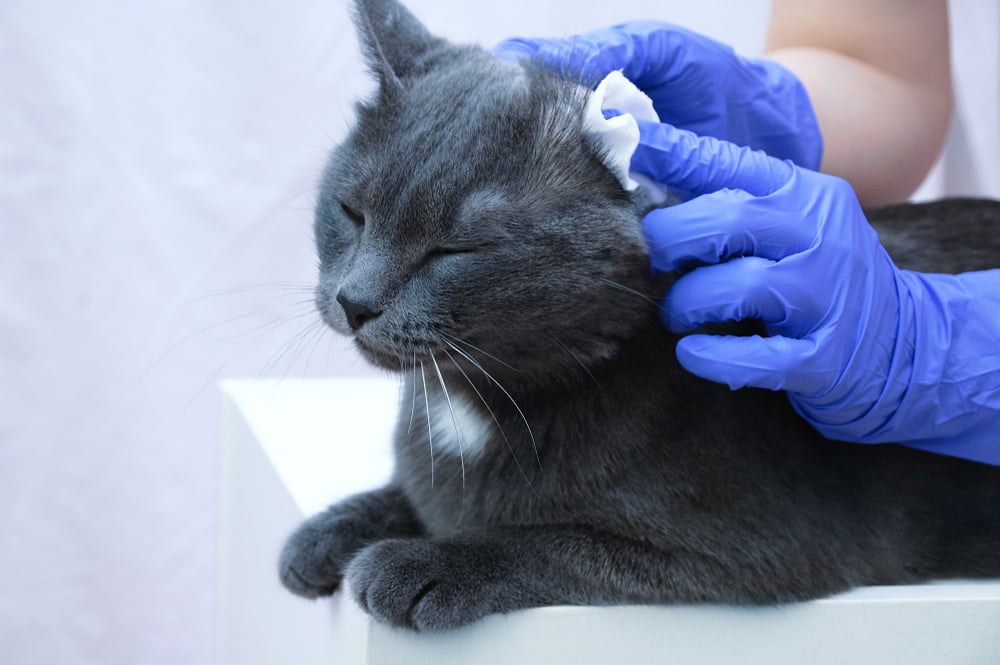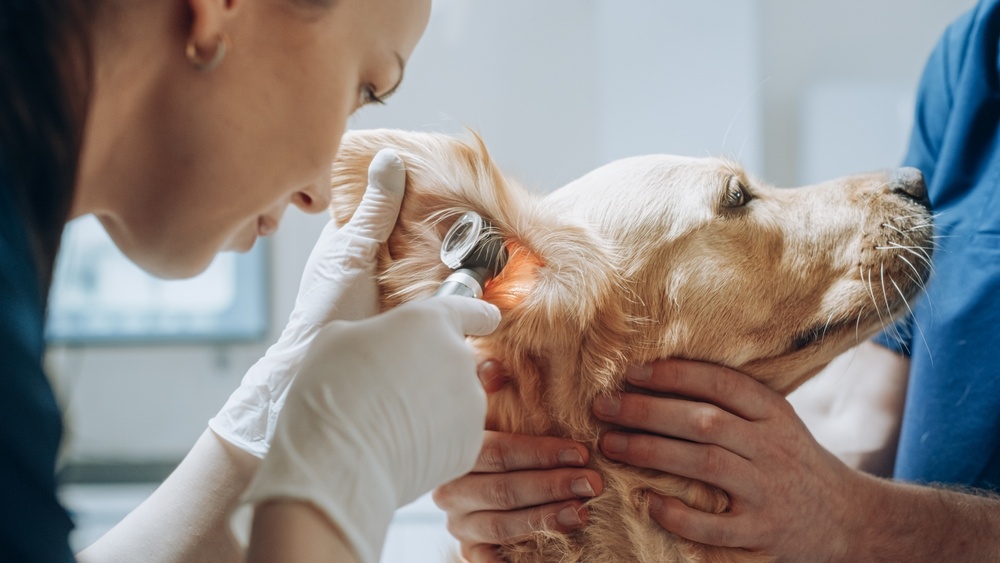The Role of Ear Cleaning in Veterinary Medicine
Regular ear cleaning serves multiple purposes:
- Prevention of Otitis Externa: Routine removal of debris and cerumen reduces the risk of microbial overgrowth.
- Enhancement of Therapeutic Efficacy: Cleaning facilitates better penetration of topical medications.
- Early Detection of Pathologies: Regular examinations allow for the prompt identification of abnormalities.
Best Practices for Ear Cleaning
- Assessment: Conduct a thorough otoscopic examination to evaluate the ear canal and tympanic membrane before cleaning.
- Product Selection: Choose an ear cleaner based on the specific needs of the patient, considering factors such as microbial involvement, inflammation, and cerumen accumulation.
- Frequency: Determine cleaning frequency based on the individual patient's condition, ranging from routine maintenance to more frequent cleaning during active infections.
When to Recommend Ear Cleaning to Pet Owners
Veterinarians should educate pet owners on when and how to clean their pet’s ears properly:
- Routine maintenance – For breeds prone to ear wax buildup or chronic otitis.
- Post-treatment care – Following ear infections to prevent recurrence.
- Before administering medications – Cleaning removes debris and improves drug absorption.
- Preventative care – For dogs that swim frequently or have environmental allergies.
Why select Chlorhexidine-Based Ear Cleaners
Chlorhexidine is a broad-spectrum antimicrobial agent effective against bacteria and fungi. Its cationic nature allows it to bind to negatively charged microbial cell walls, disrupting membrane integrity and leading to cell death. Several studies have demonstrated its efficacy in managing otitis externa.
By effectively managing bacterial and yeast infections at an early stage, chlorhexidine-based solutions reduce reliance on antibiotics, helping to prevent the emergence of multi-drug resistant (MDR) bacteria.
- Broad-Spectrum Antimicrobial Action – Effective against Staphylococcus spp., Pseudomonas spp., and Malassezia pachydermatis.
- Reduces Antibiotic Dependence – By controlling infections topically, it helps minimize the need for oral or injectable antibiotics, slowing antimicrobial resistance development.
- Proven Biofilm Disruption – When combined with Tris-EDTA, it breaks down bacterial biofilms, allowing better penetration of treatments and reducing persistent infections.
- Long-Lasting Effect – Offers residual antimicrobial activity, preventing bacterial and yeast regrowth and reducing recurrence.
- Safe for Regular Use – Formulated at veterinary-approved concentrations (0.2%–0.5%) to avoid ototoxicity and irritation.
When to use Chlorhexidine-Based Ear Cleaners?
1. Bacterial Otitis Externa
- Indication: Cytology reveals bacteria (e.g., cocci or rods) in cases of otitis externa.
- Common pathogens: Pseudomonas aeruginosa, Staphylococcus pseudintermedius.
- Goal: Reduce bacterial load to prevent or decrease the need for antibiotics while also enhancing the effectiveness of treatments through proper cleaning
2. Yeast (Malassezia) Otitis
- Indication: Cytology shows yeast overgrowth (Malassezia pachydermatis).
- Common in: Allergy-prone dogs
- Goal: Reduce yeast load to prevent or decrease the need for antifungal medication while also enhancing the effectiveness of treatments through proper cleaning
3. Recurrent or Chronic Otitis Cases
- Indication: History of recurrent ear infections where prolonged antibiotic use increases the risk of antimicrobial resistance.
- Common pathogens: Multi-drug resistant (MDR) bacteria, biofilm-producing bacteria.
- Goal: Prevent recurrence, manage low-grade infections topically, and reduce antibiotic reliance.
Pre-Treatment Before Otic Medications
4. Pre-Treatment Before Otic Medications
- Indication: To prepare the ear canal before applying topical antibiotics, antifungals, or anti-inflammatory drugs.
- Goal: Enhance drug penetration by removing wax, biofilm, and infectious debris.
Reducing Antibiotic Resistance Through Proper Ear Cleaning
One of the biggest challenges in veterinary medicine is the rise of antibiotic-resistant bacteria, particularly MDR Staphylococcus pseudintermedius and Pseudomonas aeruginosa. Topical chlorhexidine-based ear cleaners help combat this issue by:
- Reducing the bacterial load in the ear before infections become severe.
- Preventing the need for systemic antibiotics, especially in recurrent otitis cases.
- Targeting biofilms, which are a major cause of antibiotic treatment failure.
- Providing long-term maintenance to minimize future infections.

